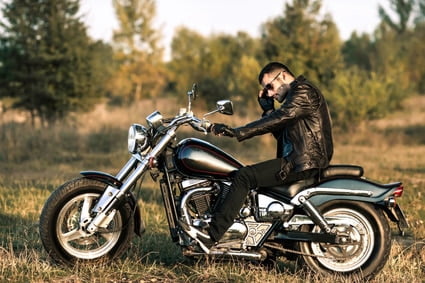How To Prepare For a Motorcycle Road Test
If you’re reading this, you have probably passed the written test and are on your way to the practical motorcycle road test. Unlike the rest, you’re a special breed who wants to ride a motorcycle. That means you must do written and practical tests specifically for motorcycle riders. Usually, how you prepare for the road test will be the difference between success and failure. Most newbies have a habit of overestimating their abilities only to discover what they ought to have known a few mistakes later. Don’t just aim to pass the test but prepare yourself to be a competent motorcycle rider.

Enroll for Basic Rider Course
The Motorcycle Safety Foundation usually offers the Basic Rider Course. Depending on the state where you take the test, the introductory rider course can cost you between $25 and $300. Keep in mind that the requirements vary from state to state. For instance, Idaho has a course known as Skills Training Advantage for Riders. The best thing about enrolling in a safety and education motorcycle course in the U.S. is that you can get a road test waiver from the DMV after you graduate. After that, you will get your motorcycle license or endorsement. However, just because you will get a road test waiver does not mean you will not prove your motorcycle skills to complete the introductory rider course successfully. Technically, you will still be doing a motorcycle driving skills test, just not at the DMV. Moreover, there could be situations that can make you skip the Basic Rider Course and instead do the motorcycle road test directly at the DMV.
Practice Makes Perfect
A typical education motorcycle course will take you at least 3 days, both in and out of the classroom. Pay attention to what you’re taught during the rider course, but remember that practicing handling the bike in your free time is just as important. If you opt to do a DMV rider test, the more reason to practice. Leave your comfort zone and go the extra mile to learn skills to make you a better rider than the average rider. For instance, practicing in different weather conditions, such as when the road is wet, will increase your perseverance levels. Of course, you have to perfect riding around cones since there is no way you’ll pass a motorcycle skills test if you keep hitting the cones. The good thing about a motorcycle is that it doesn’t take long before you know how to handle it. The more practice, the better.
Avoid Common Mistakes and Blunders
Unfortunately, practicing on a motorcycle is just not enough. You could be the best rider on skills basis, but a single mistake such as forgetting to signal could be grounds for failure. Please learn the most common mistakes riders make on a motorcycle road test so you can prepare to avoid them. Riding down a highway might seem easy for a beginner rider, but wait until you slow down behind traffic, and make tight turns while riding slowly without your feet touching down. Then you will understand how challenging it can be. Above everything else, don’t forget riding a motorcycle is different from driving a car. Almost 80 percent of motorcycle-related accidents occur because a driver did not notice a rider passing by. Hence, riders are emphasized to constantly check their mirrors and watch over their shoulders to be continually aware of their surroundings. The proctor will also quickly notice common blunders like not signaling before turns, improper positioning, and not obeying road signs.
Know Your Motorcycle
The motorcycle you use for practice should be the same one you use for the road test. Constantly changing motorcycles will complicate the process, especially if you’re a beginner motorcycle rider. Small or average-sized motorcycles are the best motorcycles for learning how to ride. Why do you ask? During the road test, a lot of maneuvering, balancing, and weaving between cones is required, and a small or mid-sized motorcycle will make the job easier for you.
Overcome Test Nerves
Making silly mistakes could be a cause for concern but also a sign of a bigger problem. Don’t just cure the symptom but eliminate the disease. In this case, test nerves could be why you keep making those silly mistakes no matter how hard you practice. However, feeling nervous is not a disease but a body reaction to a new experience. It happens to almost everybody. The trick is to stay calm during the motorcycle road test and not get overwhelmed by test nerves. There are various techniques you can use to calm yourself down like exercising, eating well, getting enough sleep and a deep breath.
Find the Appropriate Gear
If you must show up at the test center with your motorcycle gear, you must wear the part or the test will be over before it starts. You can only avoid such an embarrassment if you get your helmet, gloves, boots, jacket, reflector, and protective pads ready. Furthermore, you will need the safety gear after the motorcycle road test.
Permit.Bike is singularly devoted to the purpose of providing an easy-to-learn and simple approach to the act of riding.
